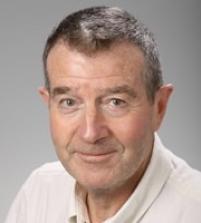Theologians on Science and Reductionism
How well do theologians and philosophers understand modern science to discuss its theological and ethical implications effectively with scientists? Recently, theologian Theodore Peters claimed that "the moral stance of the scientist is not built into the practice of science," implying that science itself lacks moral compass
How well do theologians and philosophers understand modern science to discuss its theological and ethical implications effectively with scientists? Recently, theologian Theodore Peters claimed that "the moral stance of the scientist is not built into the practice of science," implying that science itself lacks moral compass. Similarly, philosopher Paul Ricoeur warned against the reductionism associated with science and its implicit rejection of religion.
Both Peters and Ricoeur fault science as essentially reductionist, when in fact only its general methodology is reductionist. Physicist Werner Heisenberg (1901-1976) pointed this out with the observation that when Kepler, Galileo, and Newton lay the foundations of modern science, they viewed nature as the creation of God. That changed when, focusing on the details of the natural processes, scientists isolated individual processes from their surroundings, using mathematical formulae to explain them. "Newton could no longer see the world as the work of God, comprehensible only as a whole" Heisenberg noted. Newton captured his new-found relation with nature as feeling akin to a child, playing on the beach, enjoying the discovery and study of a beautiful sea shell, while not unaware of its relation to the ocean as metaphor for truth lying unexplored before him.
Paul Ricoeur and Theodore Peters appear not to have understood that their anti-reductionism, like the scientist's reductionism, derives from the same perception. R. H. Jones writes, "if something is reducible to something else, it is not fully real. Ultimately to be real means to be a non-negotiable feature of the universe—in a word, irreducible." Consequently, they failed to see that, like them, scientists acknowledge the explanatory limits of reductionism, realizing that analysis, which simplifies, is followed by synthesis, which complicates scientists' understanding of their subject. The analytical thinking associated with reductionism provides a theoretical formulation of a reality acknowledged to be much more complex. This is because "we are here dealing with a purely symbolic procedure... Hence our whole space-time view of physical phenomena depends ultimately upon these abstractions," according to Niels Bohr.
In other words, when scientists use analytical thinking as their primary methodology, they recognize "that the characteristic behavior of the whole could not, even in theory, be deduced from the most complete knowledge of the behavior of its components." Synthesis, then, is their ultimate goal. Describing it as a sequence of steps, mathematician Jacob Bronowski (1908-1974) identifies three:"It begins with a set of appearances. It organizes these into laws. And at the center of the laws it finds a knot, a point at which several laws cross: a symbol which gives unity to the laws themselves." This unity gives the lie to the Ricoeurean warning, reflecting less a descent to a few elementary components than an ascent required of the breadth and complexity of phenomena.
Physicist P.W. Anderson explains that scientific reductionism implies "constructive" or synthetic purpose. He observes that the activities of complex aggregates of elementary particles cannot be explained by some rudimentary inference from the properties of some of these particles. Since each level of complexity reveals distinctly new properties, their understanding requires distinct basic research. This is indicative of the hierarchical structure of science in which the elementary entities of many-body physics, for example, obey the laws of elementary particle physics. However, it would be wrong to conclude from this that many-body physics is simply applied elementary particle physics. Rather, each science, representing a different level of complexity, requires a new set of laws. Formulas and generalizations result from a comparable level of human inspiration and creativity responsible for the preceding level.
From the hierarchical structure of science comes the possibility of "emergence" or "broken symmetry," symmetry referring to "different viewpoints from which the system appears the same." Because of broken symmetry, Anderson concludes that we should be thinking of increasing complication, not decreasing symmetry as we ascend in the hierarchy of the sciences.
Had those skeptical of science's moral standing been conversant with this kind of scientific thinking, already in evidence in the early 1970s, their concern over science's reductionism might have been allayed. While true that science must begin with reductionism, there is nothing about this to suggest that, as a result, it also has the capacity or the intention to recreate our world in the image of its laws.
References
"Minister of Science," Art & Sciences, University of Chicago Magazine, Jan-Feb/11.
W. Heisenberg, "The Representation of Nature in Contemporary Physics," Symbolism in Religion and Literature. Ed Rollo May. New York: George Braziller, 1960.
R.H. Jones, Reductionism: Analysis and the Fullness of Reality. Bucknell University Press, 2000.
N. Bohr, Atomic Theory and the Description of Nature. Cambridge University Press, 1961.
W.H. Thorpe, "Reductionism in Biology." Studies in the Philosophy of Biology. Eds. F.J Ayala and T. Dobzhansky. , Los Angeles: University of California Press 1974.
J. Bronowski, Science and Human Values. New York: Harper and Row, 1965.
P.W. Anderson, "More is Different: Broken Symmetry and the Nature of the Hierarchical Structure of Science," Nature vol. 177, no. 4047 (4 August 1972).
T. Patrick Hill, Ph.D. '02, is Senior Policy Fellow at the Edward J. Bloustein School of Planning and Public Policy, Rutgers, The State University of New Jersey, where he teaches Public Health Law and Ethics and Ethics in Planning and Public Policy.


